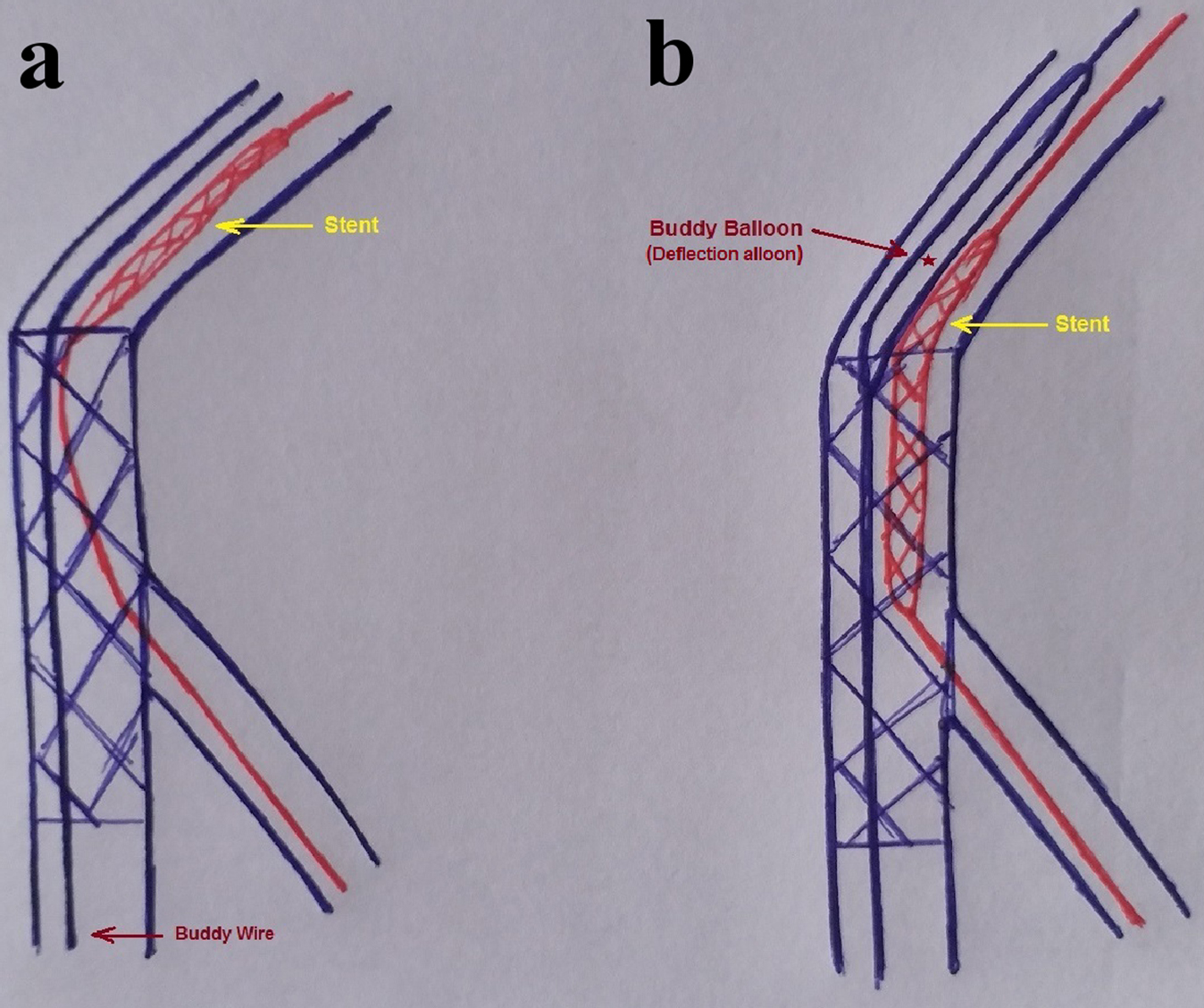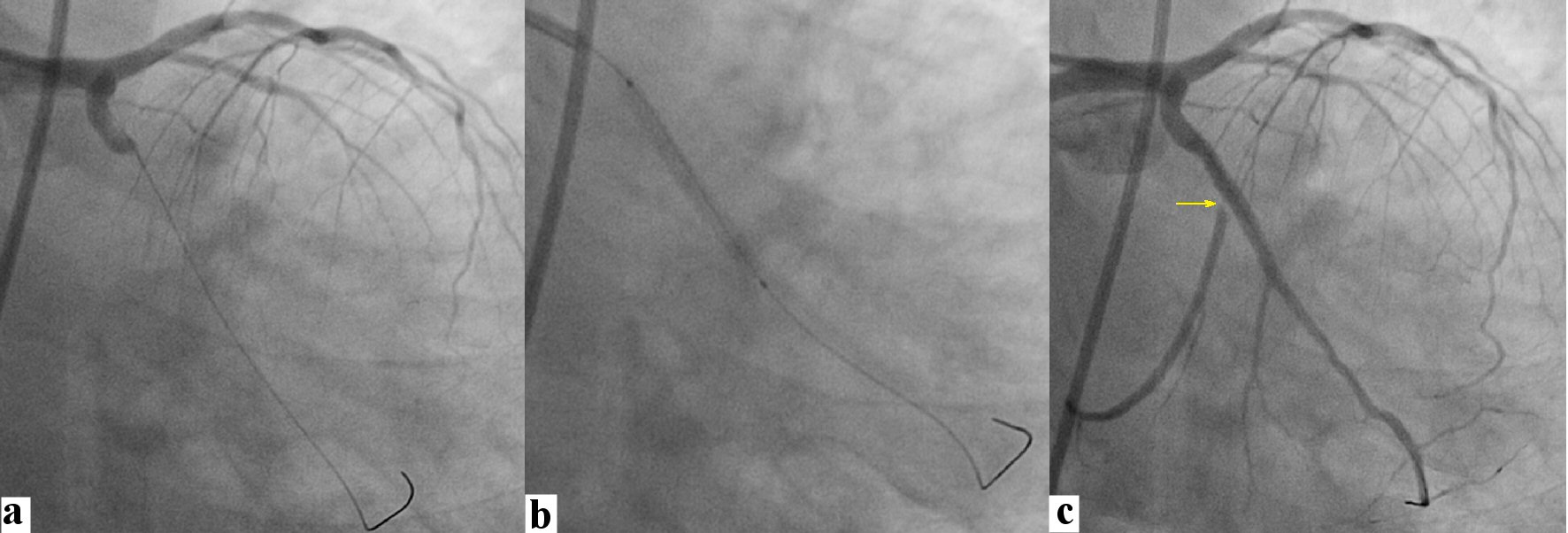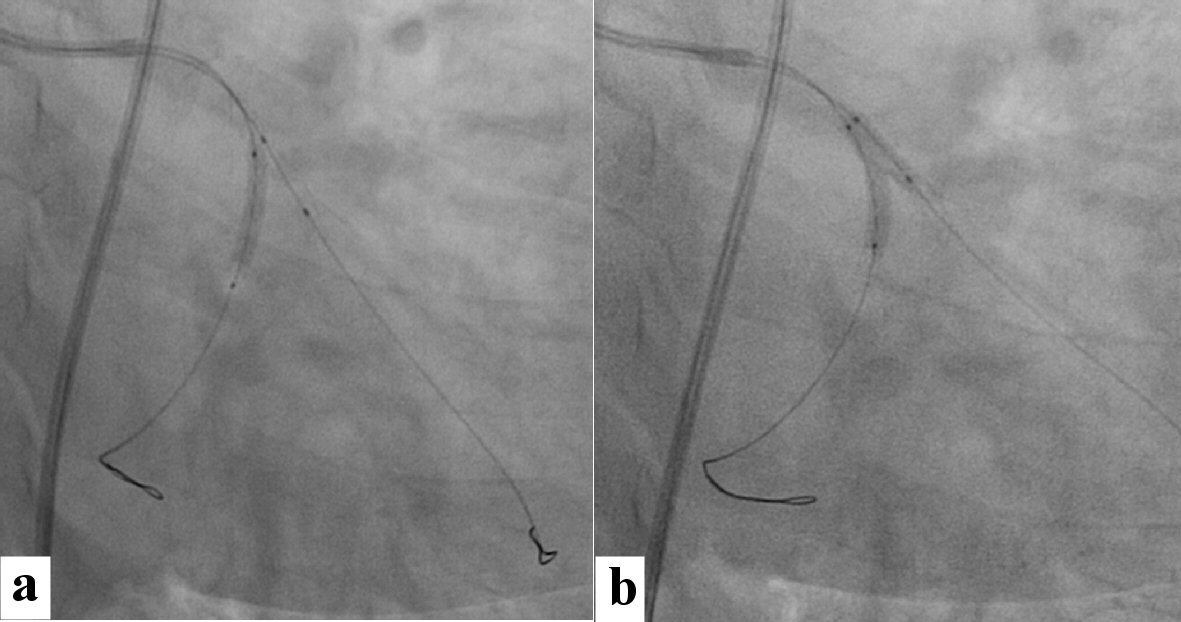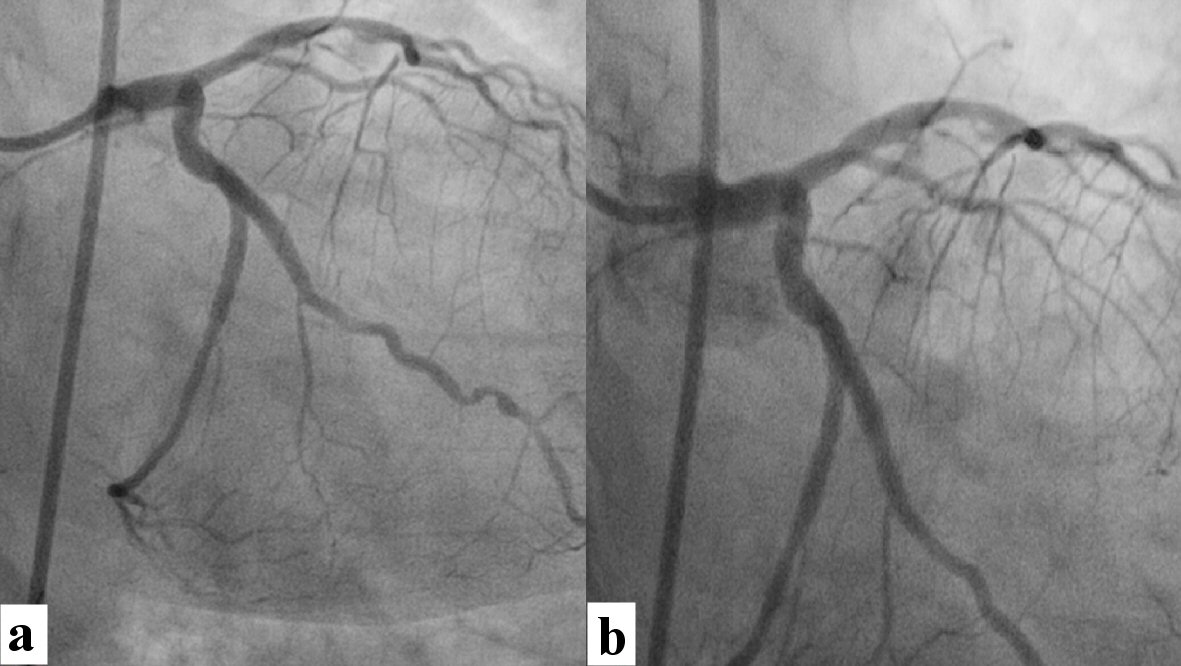
Figure 1. Schematic representation of deflection balloon technique. (a) Stent could not be crossed in side branch. (b) Deflection balloon at proximal edge of main vessel stent to facilitate side branch delivery.
| Cardiology Research, ISSN 1923-2829 print, 1923-2837 online, Open Access |
| Article copyright, the authors; Journal compilation copyright, Cardiol Res and Elmer Press Inc |
| Journal website https://www.cardiologyres.org |
Original Article
Volume 12, Number 3, June 2021, pages 201-207
Balloon Deflection Technique to Facilitate Stent Delivery in Impassable Situations During Percutaneous Coronary Intervention
Figures






Tables
| Variable | N (%) |
|---|---|
| CAD: coronary artery disease; PCI: percutaneous coronary intervention; STEMI: ST-segment elevation myocardial infarction; NSTEMI: non-ST-segment elevation myocardial infarction; UA: unstable angina; CCS: chronic coronary syndrome. | |
| Age (years) | 75.4 ± 6.5 |
| Male/female | 28 (75.7)/9 (24.3) |
| Risk factors for CAD | |
| Hypertension | 12 (32.4) |
| Diabetes mellitus | 10 (27.1) |
| Dyslipidemia | 6 (16.2) |
| Smoking | 9 (24.3) |
| Indication for PCI | |
| STEMI | 5 (13.5) |
| NSTEMI | 9 (24.4) |
| UA | 4 (10.8) |
| CCS | 19 (51.3) |
| Variable | N (%) |
|---|---|
| LAD: left anterior descending artery; LCX: left circumflex coronary artery; RCA: right coronary artery; CTO: chronic total occlusion; PCI: percutaneous coronary intervention; MI: myocardial infarction; ST: stent thrombosis. | |
| Success/failure | 36 (97.3)/1 (2.7) |
| Target vessel | |
| LAD | 11 (29.7) |
| LCX | 16 (43.2) |
| RCA | 10 (27.1) |
| Lesion characteristics | |
| Calcification | 7 (18.9) |
| Tortuosity | 9 (24.3) |
| Angulation | 10 (27.1) |
| CTO | 8 (21.6) |
| Distally located lesion | 3 (8.1) |
| Type of lesion | |
| B1 | 7 (18.9) |
| B2 | 17 (45.9) |
| C | 13 (35.2) |
| Mean diameter of the stents | 3.3 ± 0.9 mm |
| Mean length of stents | 18 ± 6 mm |
| Mean diameter of defection balloon | 3 ± 0.5 mm |
| Mean length of defection balloon | 20 ± 0.5 mm |
| Lesion preparation | |
| Aggressive pre-dilatation | 36 (100) |
| Cutting balloon modification of the lesion | 7 (19.4) |
| Buddy wire technique | 20 (54.1) |
| Complications | |
| Peri-procedural (dissection, stent dislodgement) | 1 (3.7) |
| In hospital (MI, ST) | 0 (0.0) |
| Mortality at 30 day | 0 (0.0) |